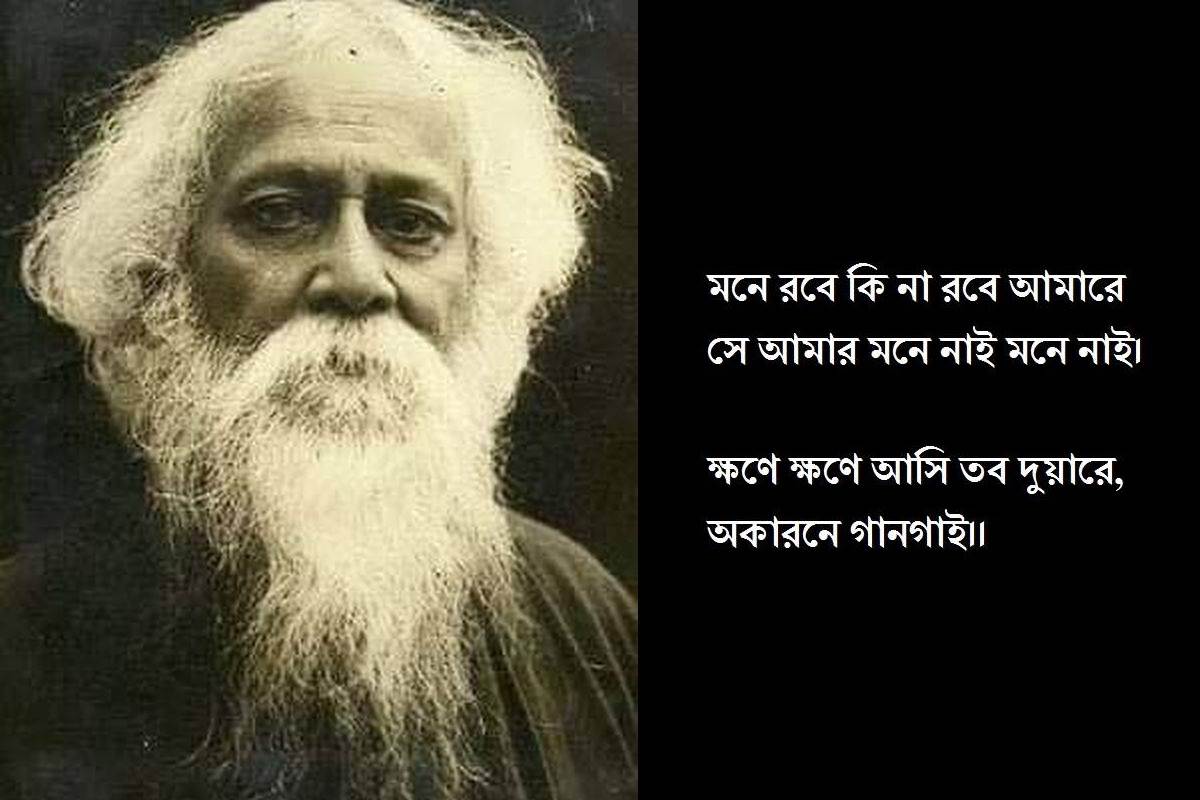Nothing is more heartwarming than savouring the lingering notes of Rabindrasangeet be it while walking in a peace march or as one waits on the platform underground for the next Metro or listening to one’s favourite Tagore compositions while munching delicacies at a food festival on the Milan Mela grounds.
Born 150 years ago in this city then called Calcutta, Rabindranath Tagore continues to make it proud on occasions of which Kolkatans have lost count. There are very few things that establish the identity of Kolkata more than the perpetual references to the first Nobel Laureate. Brushing aside the passage of time, he is still considered the leading icon of the city which does not lack men and women who can be looked up to. A major thoroughfare is named after him. So are several underground stations, a theatre, public parks, bridges. The state authorities and private individuals and concerns are loath to let go any occasion which can be utilised to use his name. Tagore remains as contemporary in these days of malls and multiplexes as he was he was on the day he became the first Asian to be awarded Nobel prize or when he chose to give up knighthood to mark his protest against the Jallianwala Bagh massacre.
Advertisement
Small wonder, a chief minister who flaunted his cultural superiority quoted some of the lines of Tagore to cover up a faux pas, not realising that it was against Tagore’s nature to hide his own fault. Another noted singer gave a full-throated rendition of a Tagore song to proclaim his allegiance to a leader, a rising star in state politics. On the other hand, the leader his song was addressed to never tires of invoking the Tagore song of walking alone despite odds. One doesn’t have to wait for “Ponchishey Baisakh” every year to demonstrate that kind of Tagore consciousness.
For Tagore is not an individual who will be remembered only on his birth anniversary. Without any effort on his part he makes his presence felt during our waking hours and the rest. It is now evident at road junctions and public rallies, ceremonial occasions on Thursday not to forget informal gatherings throughout the year that Rabindranath Tagore is part of our consciousness. Nothing is more heartwarming than savouring the lingering notes of Rabindrasangeet be it while walking in a peace march or as one waits on the platform underground for the next Metro or listening to one’s favourite Tagore compositions while munching delicacies at a food festival on the Milan Mela grounds.
It is a pity that the well established schools for teaching Tagore music have lost the position they once held because many of the stalwarts have passed away. There is no dearth of teachers running private schools. How many can command the confidence of young learners is anyone’s guess.
READ | When is Rabindra Jayanti 2019?
The truth is that Tagore music is probably the best way to enter into the consciousness of the masses. While it confirms the success with which the poet has become an integral part of life in Kolkata and elsewhere, doubts persist about whether musical skills have been properly imbibed before desperate efforts are made to mount a public platform. An official organiser of Rabindra Jayanti once revealed with a touch of dismay that for a platform that can accommodate not more than 50 singers in a programme that gets stretched well beyond the scheduled hour, he had received more than 1,000 applications.
The positive side is that every Rabindra Jayanti throws up a couple of talents that are full of promise such as a comparative newcomer who made it to the national film awards on the strength of a Tagore song she had rendered in a film. To be sure, there will be much more than Tagore music on the poet’s 157th birth anniversary. The Bangla channels will come alive early in the morning with their offerings of Rabindra adda, recollections of old times with singers like Debabrata Biswas, Suchitra Mitra, Kanika Bandopadhyay, Subinoy Ray and Ashoktaru Bandopadhyay, memories of Santiniketan during the years of Santidev Ghosh and painters like KG Subramanyan.
There is a touch of sadness that Akashvani hasn’t been able to find a replacement for Pankaj Kumar Mallick in his weekly lessons of Rabindrasangeet on Sunday morning that were hugely popular four decades ago. Of course there is an abundance of Tagore music in television serials but that has come only after the windows have been opened to allow experiments that have drawn mixed reactions.
What matters is that the Tagore consciousness has survived in his poems and songs, his stories and paintings, the establishments that have carried the legacy with dogged determination. Besides, there is the craze for rushing to Santiniketan for relaxed weekends and a taste of the unique climate. It has caused the railway services from Howrah Sealdah and Kolkata stations to Bolpur and Prantik to be much in demand, especially on occasions like Basanta Utsav and Paush Mela. But the Durgapur Expressway still makes a comfortable drive despite some of the horrible mishaps that have occurred recently.
There is nothing quite as inspiring as a three-hour drive with the voices of Kishore Kumar and Hemanta Mukherjee sustaining the passion that will never fade. Clearly, the poet continues to open many more windows.









